#Code of Criminal Procedure
Explore tagged Tumblr posts
Text
Landmark Legislation: Parliament Passes Historic Criminal Law Bills for Overhauling Justice System
Landmark Legislation: Parliament Passes Historic Criminal Law Bills for Overhauling Justice System #CriminalLawReform #ParliamentLegislation #JusticeSystemOverhaul #LegalNews #BharatiyaNyayaSanhita #BharatiyaNagarikSurakshaSanhita #BharatiyaSakshyaSanhita
The Rajya Sabha passed three criminal law bills on Thursday, December 21, 2023, after the Lok Sabha had passed them on Wednesday. The bills are: Bharatiya Nyaya (Second) Sanhita, which replaces the Indian Penal Code, 1860. Bharatiya Nagarik Suraksha (Second) Sanhita, which replaces the Code of Criminal Procedure, 1898. Bharatiya Sakshya (Second) Sanhita, which replaces the Indian Evidence Act,…

View On WordPress
#Bharatiya Nagarik Suraksha Sanhita#Bharatiya Nyaya Sanhita#Bharatiya Sakshya Sanhita#Code of Criminal Procedure#Constitutional Amendments#Criminal Law#Indian Evidence Act#Indian Penal Code#Justice Reform#Legislative Process#Parliament#Sedition#Terrorism
1 note
·
View note
Text
India's Legal Labyrinth: A Satirical Guide to Understanding BNS2, BNSS2, and BSB2
**Once Upon a Time in a Legal Wonderland:**In the grand democratic theatre of India, where laws are often more dramatic than Bollywood blockbusters, we’re witnessing the introduction of three legal musketeers: Bharatiya Nyaya (Second) Sanhita (BNS2), Bharatiya Nagrik Suraksha (Second) Sanhita (BNSS2), and Bharatiya Sakshya (Second) Bill (BSB2). They’re set to replace old legal classics – the IPC,…
View On WordPress
#2023#BNS2#BNSS2#BSB2#civil liberties#civil rights#Code of Criminal Procedure#constitutional law#democratic debate#freedom of speech#India legal reforms#Indian Evidence Act#Indian Parliament#Indian Penal Code#judicial system#Khalistan-movement#legal controversies#legal satire#legal updates 2023#Legal-Analysis#legislative process#National-Security#political humor#sedition law#treason in India#witty commentary
0 notes
Text
Human Rights of an Accused Person in India: Laws and Case Laws
In India, an accused person has certain human rights that are protected under the Constitution and various laws. Some of the key human rights of an accused person in India are: Right to a fair trial: The Constitution of India guarantees the right to a fair trial to every person accused of a crime. This includes the right to be heard, the right to legal representation, and the right to a speedy…

View On WordPress
#Accused person#Bail#Case laws#Code of Criminal Procedure#constitution#Cross-examination#Cruel and degrading treatment#Double jeopardy#Fair trial#human rights#India#Judiciary#Legal representation#Right to remain silent#Self-incrimination#Speedy trial
1 note
·
View note
Text
Indian Laws Which Are Related To Drugs And Poisons
In Article 47 of the Indian Constitution, it is stated that the "State should endeavour to bring about prohibition of the consumption of intoxicating beverages and of narcotics which are harmful to health, except for therapeutic purposes." The same....
Continue reading Indian Laws Which Are Related To Drugs And Poisons
#Indian Laws Which Are Related To Drugs And Poisons#Small Quantity And Commercial Quantity Of Drugs Under Ndps Act 1985#The Criminal Procedure Code Crpc 1973#The Drugs Act 1940#The Drugs and Cosmetics Act 1940#The Drugs and Cosmetics Rules 1945#The Drugs and Magic Remedies Act 1954#The Drugs Control Act 1950#The Indian Evidence Act (IEA) 1872#The Indian Penal Code Ipc 1860#The Narcotics Drugs And Psychotropic Substance Act 1985#The Pharmacy Act 1948#The Poison Act 1919
1 note
·
View note
Text
Important Sections and Comparison
Important Sections and Comparison #LAW #IPC #BNS #BNSS #CRPC #IEA #BSA
Important Sections and Comparison Bharatiya Nyaya Sanhita (BNS) – 2023 VS Indian Penal Code (IPC) – 1860 Bharatiya Nagarik Suraksha Sanhita (BNSS) – 2023 VS Criminal Procedure Code (CRPC) – 1973 Bharatiya Sakshya Adhiniyam (BSA) – 2023 VS Indian Evidence Act (IEA) – 1872
#Bharatiya Nagarik Suraksha Sanhita (BNSS) - 2023#Bharatiya Nyaya Sanhita (BNS) - 2023#Bharatiya Sakshya Adhiniyam (BSA) – 2023#Criminal Procedure Code (CRPC) – 1973#Indian Evidence Act (IEA) – 1872#Indian Penal Code (IPC) - 1860
0 notes
Text
Understanding Bail: Types, Grounds and Legal Provisions
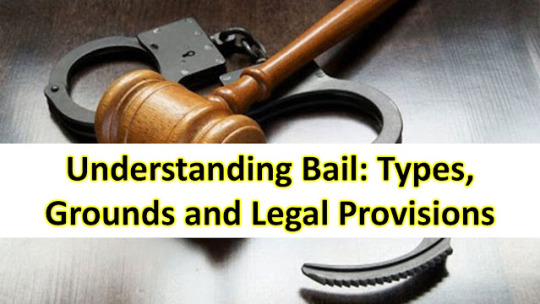
The Concept of Bail: Explained and Explored
Introduction
Bail is a well-established legal concept that has been in existence for a long time. The fundamental philosophy behind bail is to allow the accused to be released from the custody of law enforcement agencies and placed under the supervision of sureties. It serves as an interim order that can be revoked by the court at any stage, depending on the circumstances.Relevant Provisions: Understanding the Legal Framework
To better understand the concept of bail, it is essential to consider the relevant provisions within the Criminal Procedure Code (Cr.P.C.). In this regard, Sections 496, 497, and 498 of the Cr.P.C. play a significant role. Click Here to Read Full Article
#bail#bail procedure#crpc#bail procedure under criminal procedure code#Types of bail#legal provision for bail#bail in Pakistan#Basic Pakistani Laws in Urdu
0 notes
Text
For people that complain code blues on tv shows are over the top you need to watch Criminal Minds …that doctor and nurse did not care if that patient died right there they were not going to show any urgency at all they were just like 🧍♂️K. We’ll call a code blue when she’s already dead idc
#criminal minds#criminal minds rewatch#1.13#I need tags for this I’m going to make everyone read my thoughts they didn’t ask for#seriously tho they were like ‘defibrillator charging 🫥’ ‘nothing🫥’ like are you trying to save her life#and then they called a code blue AFTER ??? like maybe you should’ve done it before#so many people in this show just give NOTHING I’m so obsessed#it has got to be the most understated of procedurals#anyway this episode sucked I hated it and GIVE ME MORE ELLE
0 notes
Text
What makes White Collar hold up so much better than other police procedurals:
It was part of the "pretty happy shows with gorgeous ensemble casts and a charismatic weird guy" USA network era but it somehow used that to be about stuff that is so REAL
What is justice? Is our system fair? Can you be a criminal and still be a good man? Can you be a good man and still work for the system?
The bad guys are rich assholes, and people defrauding families out of their homes, and unethical pharmaceutical companies. People manipulating energy supply out of greed resulting in blackouts which are showing *harming a dog,* aka how to show something is monstrous in a pg show written by a white person. Class exists in this universe in more ways than having a cardboard concept of a "rich guy."
The bad guys include police, FBI agents, prison staff, judges, senators. Those people cause real harm, obstruct justice, plant evidence, kill people. It's shown how the system protects them and harms regular people.
The harm that causes the main character to go from wanting to be part of the system, to subverting and working against it, is him finding out about an act of police corruption, brutality, and murder--and what's more, that if he became a cop, that's what he could become.
The harm that causes the main character to be outside the white picket fence is that the system failed his family after that act. What happened to Neal's mom? Why did nobody besides Helen step in? They had to check in with US Marshals, did nobody notice this kid didn't have an adult fit to parent?
So Neal turns to found family. And let's be real, heavily polyamory coded found family at that. But he keeps chasing the idea of a girl who will be everything. But he's got all this attachment trauma so he never does. But because found family is real family, even the people who freaking played the characters are still connected a decade later
#white collar tv show#white collar#neal caffrey#white collar usa#white collar (2009)#white collar meta#also like#not to mention the cast was relatively diverse#there was actual queer representation#and i see so many people coming back to it for comfort who loved it originally#it was fun exciting pretty crime show when I was 18#32 year old polyam person taking care of and being taken care of by found family#living in 2024#after living through 201620202023 that slide of years#it hits#uh#different
844 notes
·
View notes
Text
About the settlement in YR S3
A discussion with @scatteredpiecesofme a while back inspired me to look more closely into the settlement between August, Wilhelm and Simon. I already dabbled in criminal justice meta after S2, but I didn't account for a settlement back then, so it's time to update my info!
Posting this, I know it's a topic people have strong feelings about. If you choose to read below the cut, please keep in mind that it's not meant to be a moral judgment. It's an attempt to review the case as presented in the show and interpret it through what I've learned about law and procedure in real Sweden.
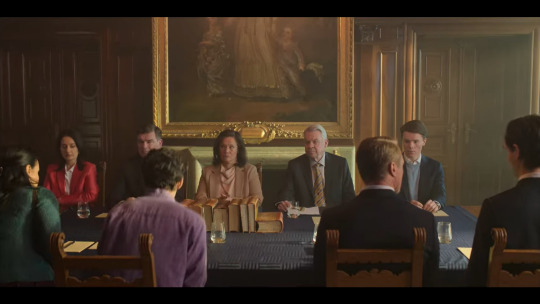
TL;DR: The offences being settled are defamation and unlawful breach of privacy. The settlement of 1.2 million kronor is dozens of times higher than what Simon could realistically expect from court.
Sources: Swedish Criminal Code (EN-SV), Code of Judicial Procedure (SV), preparatory documents for relevant laws (this and this), reference collection on kränkningsersättning, cases available online or in the media (e.g. this and this on dagensjuridik.se), legal blogs, articles and legal advice websites (e.g. lawline.se, Domarbloggen), discussion on treasonable offences (SvD column, expert exchange, motion to parliament, this and this tabloid article), guidelines/advice for prosecutors (e.g. on defamation, day-fines).
Disclaimer: I'm just a layperson and not even Swedish myself, so it's entirely possible I missed something! Respectful discussion and corrections are very welcome!
.
The facts of the case against August
Quick recap
August committed criminal offences by filming and posting the video.
Sara reported August to the police.
August, Wille, Simon and their legal counsels and parents negotiated a settlement at the royal palace with Jan-Olof presiding.
JO said they wanted to avoid a trial. Rickard claimed the evidence and testimonies would not be enough to secure a conviction, and the video was not likely to be considered explicit.
Simon's counsel said Wille's legal team had already decided not to pursue the matter in court.
They settled for 1.2 million kronor, presumably per plaintiff.
The offences on the table
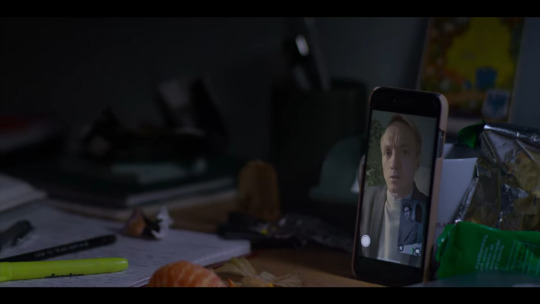
“Spreading that kind of video could be considered gross defamation, gross unlawful breach of privacy, and possibly a CP offence. The penal value is prison, in any case.”
It's pretty clear August also committed intrusive photography, but that overlaps with unlawful breach of privacy, so that might be why it wasn't mentioned. Here's a complete list:
- intrusive photography (kränkande fotografering, covertly photographing or filming someone in a private space) - unlawful breach of privacy (olaga integritetsintrång, disseminating sensitive images in a way that's liable to result in serious harm) - defamation (förtal, disseminating information that identifies someone as a criminal or their way of life as reprehensible, or is otherwise liable to expose them to contempt) - treasonable offences (högmålsbrott, a clause that, among other things, makes some crimes more severe when committed against a member of the Royal House) -CP (I'm not writing this out so the post doesn't get caught in filters)
Unlawful breach of privacy was also mentioned by Rosh back in S2. It's a fairly new offence that entered into force in 2018, and very few cases lead to a conviction (only 27 out of the total 1,876 in 2021). Even when a perpetrator is identified, it's hard to prove it was them (and no one else) using the device. Proving an intent of serious harm isn't easy either, but the court usually considers whether the defendant should have known that was liable to occur.
The main angle in the show was defamation, which doesn't need to be untrue in Sweden. It's all about exposing someone to contempt - and if the defamatory statement is also liable to result in serious harm, it becomes gross defamation. This is why Rickard, who already called gross defamation in S2, argues in S3 that outing someone no longer counts as exposing them to contempt (he's refuting that it was defamation at all).
Another way off the hook would be to show that 1) the statement was true and 2) the defendant was “obliged to make it” or it was “otherwise justifiable to provide information about the matter.”
The treasonable offences clause is a bit of a legal minefield. It allows the public prosecutor to demand harsher punishments for some crimes when they are committed against members of the Royal House, but it also creates questions of whether the royals are even able to bring these types of charges the normal way. It clearly didn't come into play in YR, but I'll return to it in the conclusion.
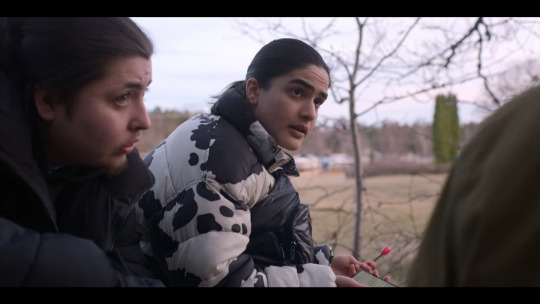
A CP offence was also mentioned in S2 by Rosh and Rickard. Rosh reckoned it was a sure thing and could land August in prison, but Rickard only listed it as a possibility. He said the penal value was prison “in any case” because gross unlawful breach of privacy is always punishable by prison (more about the penal values in my now-obsolete post).
Still, this was dramatic exaggeration by the writers. August is 18, and persons under 21 could not be imprisoned unless there were very heavy grounds for it back in 2020/2021. Even the stricter law from 2022 mainly applies to violent and gang-related offences.
By the old law and practice, any sentence given to an 18-yo would be reduced to 50% of an adult's sentence, and August is also a first-time offender. If convicted, he'd be looking at some combination of fines, youth community service, and/or a suspended sentence.

That's another silly thing about the Alexander ploy in S2, although not as silly as Alexander forgetting he had already been caught with the drugs.
So that's the potential crimes listed. We'll get to the crimes that were actually being settled in a little bit.
Relevant facts about procedure
To understand how they got from Sara's police report to the settlement scene, it's useful to look at some intricacies of the Swedish justice system that may differ from other countries.
The right to press and pursue charges
By Swedish law, most crimes are subject to public prosecution by the state. The police are legally obligated to start what is known as a “preliminary” investigation when a crime is reported, and the prosecutor is legally obligated to consider charges and pursue them. Regardless of what the victim/plaintiff wants.
There are two notable exceptions. Charges for målsägandebrott (“plaintiff offences”) can only be brought by the plaintiff, and angivelsebrott (“offences subject to report”) must be reported for prosecution by the plaintiff. If an angivelsebrott is reported by someone else, the plaintiff decides if they want the case to go ahead.
These are also the only types of crimes where the plaintiff is able to withdraw the charges. If they do, neither they nor the public prosecutor can ever bring the same matter again.
In the YR case, defamation is målsägandebrott, the privacy offences are angivelsebrott, and CP is always subject to public prosecution.
It's also possible for angivelsebrott to be publicly prosecuted when public interest calls for it (e.g. gross unlawful breach of privacy is often considered serious enough to meet this bar). The same goes for målsägandebrott under certain circumstances, e.g. when the victim of defamation is under 18. Public prosecution also applies if there are multiple offences and one of the other offences is subject to it.
If charges are raised by public prosecution, the injured party becomes unable to withdraw them (the state becomes the plaintiff in their stead).
Concurrent offences and protective interests
When someone commits more than one offence by a single action, these are assessed for brottskonkurrens (concurrence of offences).
In some cases, the offence with the harshest punishments 'consumes' the others so they no longer count. For example, gross unlawful breach of privacy is always punishable by prison, so it often consumes defamation and even gross defamation.
In other cases, all the offences count 'in concurrence'. One example is when the laws that were broken had different skyddsinteressen (protective interests). In the YR case, intrusive photography and unlawful breach of privacy have the same protective interest: both crimes infringe on the right to privacy and personal integrity. Defamation infringes on a person's honour and reputation, which is a different interest. Hence, unlawful breach of privacy of normal severity is often pursued and punished in concurrence with defamation (normal or gross), but less often with intrusive photography.
As for CP, Swedish law classifies it as an offence against the public order (not as a sex crime, although it can overlap with sex crimes such as using minors for sexual posing). The protective interest is twofold: the individual child's right to personal integrity, and the right of children at large to be safe from CP. So there is some overlap with the privacy offences, but it's also an offence that falls within a completely different area of law.
Note that the sentence is not given as the sum total of the concurrent offences! It's the sentence for the most severe offence, with increases for the concurrent offences (as determined by the judge).
Settlement vs. mediation
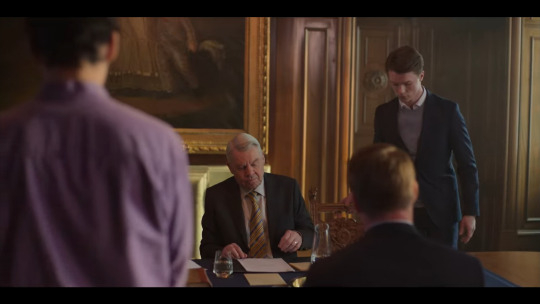
JO tells us the parties are doing förlikning (settlement) to avoid the matter going to trial. This is different from medling (mediation).
Settlement primarily applies to disputes, but it can also be a private, out-of-court resolution for some offences. In my understanding, these would be målsägandebrott or angivelsebrott, as the plaintiff agrees not to pursue the matter in exchange for compensation. The settlement also prevents public prosecution even if it is determined later on that the conditions for that are met.
Mediation is a process where a neutral party authorised by the court (not JO) brings the victim and perpetrator of a crime together. It can also be used for family law disputes, but this is less relevant for us. The parties can agree on compensation, but the main objective is just to discuss and process the matter. The perpetrator must admit their guilt in order for mediation to go ahead.
Mediation is separate from the court process, but the defendant's willingness to enter it and a favourable outcome may be taken into account. The prosecutor may bring less severe charges or even offer åtalsunderlåtelse (no-prosecution deal), whereby the offence goes on the guilty person's criminal record but they avoid trial and punishment. If a trial does happen, the judge may be more lenient.
How this all relates to the settlement scene in YR
Based on the above, the settlement in 3.01 must be for defamation, and very likely also unlawful breach of privacy. Intrusive photography is also possible, although the characters never mention it.
Defamation is målsägandebrott and privacy offences are angivelsebrott. Hence, the matter can be settled out of court.
It's hard to say if any of the offences could be gross, despite what Rickard said back in S2. The breach of privacy probably isn't, since it hasn't consumed the defamation or been publicly prosecuted. The defamation could certainly be (this would align with legal precedent for spreading sex tapes), but I think this type of gross defamation of the Crown Prince and another minor should already meet the threshold for public interest.
We don't know exactly when the settlement scene is set, or how long has passed between seasons. Offences involving minor parties must be investigated without delay, but it is possible that the prosecutor is still considering whether to claim public interest. If the settlement is finalised before public charges can be brought for these particular offences, that will no longer be possible.
The opposite is true for the potential CP offence. In my understanding, being able to settle out of court means that must already be off the table.
The police will have been legally obligated to open a preliminary investigation when they received a report about a legal (young) adult having filmed two minors in a sexual situation. Simon and Wille will have been notified of the privacy offences and defamation, and asked if they wanted the investigation to go ahead (since they didn't make the report themselves). But a CP offence is different. It's the kind of crime that must have been investigated even if the victims said they didn't want to press charges or refused to cooperate.
Based on the preliminary investigation, the prosecutor will have considered charges. August's age and development gap to Wille and Simon and the explicitness of the video will have been assessed. His defamatory (not sexual) intent and the other offences could have factored in as well.
I'm not going to guess any further at the reasoning, but no charges were brought. CP is subject to public prosecution, and that also applies to any concurring offences. The settlement wouldn't be possible if it was still in the mix.
Instead, they could be having court-authorised mediation with a neutral party, but only if August already admitted his guilt. (This was actually the part that confused me the most when I first watched the show and wasn't aware of the difference between the processes.)
Anyway. Now that we know what was being settled, I also want to look at the level of compensation.
Compensation compared to court sanctions
The settlement was for 1.2 million kronor. Presumably per plaintiff, as that was the number Simon's counsel gave him. Both he and Rickard described it as generous.

So how does the sum actually compare to what the court might have awarded Simon or handed down as a punishment to August?
Fines
If convicted in court, August could be sentenced to dagsböter (day-fines). The sum ranges from 50 to 1,000 kronor per day, and the minimum number of fines is 30. The maximum is 150, or 200 for multiple offences.
In this case, there are indeed multiple offences (two or three depending on whether intrusive photography still counts), so the absolute maximum is 200,000.
Now for some speculation!
A day-fine is the person's annual income divided by a thousand, adjusted for net wealth and debt. August is a cash-poor student with no job. He must get a bit of income from the estate and possibly some other investments, but if he can't afford to pay Simon back for the drugs and alcohol, it can't be much.
So, the base sum will be low. It gets raised by 50 kronor for every 500,000 of net wealth over 1.5 million, but then there's also a reduction for significant debts. If August truly has to sell his estate to free up 2.4 million, it can't be valued very high and/or he must be in serious debt. His day-fine will land in the hundreds, but I doubt it reaches 1,000.
It's hard to say how many day-fines he would get, but I don't think it would be anywhere close to 200. In examples found online, 40 seems pretty common for each of these crimes at normal severity. In one case, a man convicted of unlawful breach of privacy and gross defamation got a suspended sentence + 80 day-fines, which changed to 100 day-fines for just gross defamation on appeal.
Although the parties in these cases are all adults, while August is in the young offenders bracket. For example, he might get those 80 day-fines but no suspended sentence, or he might get something else entirely. Compare with a case where an 18-yo boy (17 at the time of the crime) spread a film of his friend having sex with a woman: he was convicted of both intrusive photography and unlawful breach of privacy but only sentenced to 35 hours of youth community service.
However, the boy did have to pay compensation.

Compensation payable to the victim
An injured party is often entitled to apply for compensation. In these types of crimes, it's called kränkningsersättning (compensation for infringement/suffering), and there is no cap on it.
However, there are some relevant sample cases online.
The boy in our previous example had to pay 25,000 to the woman.
A person who spread a sexual film showing a 14-yo girl was convicted of gross defamation and had to pay 25,000.
A man who secretly filmed an 8 to 12-yo girl in the bathroom was convicted of a CP offence and had to pay 25,000. The reference collection of cases says it's worth noting this happened before intrusive photography was criminalised as its own offence.
A woman who filmed a 16-yo boy having sex with his girlfriend and posted the video online was convicted of unlawful breach of privacy and gross defamation and had to pay 30,000.
A man who spread sexual photos of his ex to her friends and employer was convicted of gross defamation and had to pay 50,000.
A man who uploaded films of his ex on an adult site was convicted of gross unlawful breach of privacy and had to pay 60,000. In a very similar case before the privacy offences were criminalised, a man was convicted of gross defamation and had to pay 70,000.
The settlement sum of 1.2 million is 17 to 20 times higher than the highest examples. It's also 40 times higher than the example of the 16-yo boy and his girlfriend, which I think is a remotely similar case (although the place of filming was less private and the dissemination was less broad and damaging than in YR). On August's side, the 2.4 million is many times higher than the day-fines plus compensation, even if we don't know the exact numbers.
So that gives us some idea of the level of compensation and monetary punishment that Simon and August could realistically expect, but those aren't the only factors Simon might consider.
Conclusion: a trial could get very complicated
As mentioned above, Wille's legal team had already decided they would not be going to court. It's unsure if that could have even been done in the normal way.
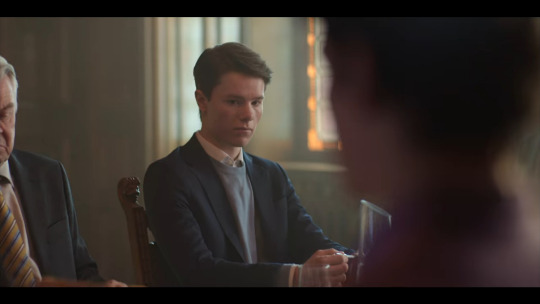
Some legal experts believe the treasonable offences clause prevents members of the Royal House from bringing normal charges at all if they are victims of målsägandebrott or angivelsebrott, because they are considered a stately institution. Others think it should be possible if they just waive their right to treasonable offences, but the royals have never tried.
Instead, the public prosecutor may ask the government to authorise a treasonable offences charge. In theory, the government could say yes even if the victim themself said no, but that's extremely unlikely (for example, when a teen threw a cake in the real king's face in 2001, it was considered the king's decision). The prosecutor who handled the matter in YR could have already asked and been denied, or they could have decided against it if they knew Wille would object.
If Wille had decided to try and bring normal charges, his legal standing would have become a hot topic. If treasonable offences had been charged, the charges would have been public. Either way, the case would have gained a lot of media attention.
Wille being one of the plaintiffs could have also lead to a more stringent punishment for August. Especially for treasonable offences; the real cake-thrower was sentenced to 100 day-fines for harassment, which is a big sentence for a 16-yo (an adult could've got up to four years in prison). Even if they were normal charges, Wille was the one August intended to harm, which would have made the crimes all the more severe.
The level of compensation could have been higher too...at least for Wille. It's frankly beyond my comprehension as a layperson whether his and Simon's cases could have even been tried together due to their wildly different circumstances.
Simon is like any other person in the legal system. If the case did go to trial and August was convicted, he would receive compensation in line with the above. August would also have to pay his legal fees, as well as the potential fines.
It's hard to say how good the chances of a conviction were. Rickard was just defending August when he said identifying someone as gay was no longer considered defamatory, but that is true for Swedish society at large. However, it can still be defamatory if you out someone to people who can be expected to react with contempt (e.g. a religious group). For both defamation and privacy offences, it should also matter how widely the information was disseminated and how bad the consequences were (although you won't be rewarded for causing less harm than expected/intended).
We never actually heard if Rickard had a defence in mind for Simon's particular circumstances. On the one hand, Simon was already out, and he wasn't the target of August's harmful intent. On the other hand, surely August should have known he was liable to suffer serious harm by association. Their lawyers could argue these and other standpoints, and it could get complicated, especially if Wille couldn't be involved after settling.
For argument's sake... Let's say Rickard was right about the evidence and testimony not being enough, and Simon lost the trial.
He would have to pay both his and August's legal feels. Those are probably covered by the Erikssons' home insurance, but there will be a deductible of about 20%, and a cap of two, three hundred thousand. I assume this would normally be enough, but going up against “one of Sweden's best criminal lawyers” could still be a daunting prospect. Rickard might be representing his stepson for free at this early stage, but if the case went to trial and he was very confident they could win, that might change.
And leaving the financial stuff aside, Simon says he just wants the whole thing to be over. He doesn't want to have to rehash it all in court against August and Rickard, and although it's Wille's side who complain about the media storm, that isn't fun for Simon either. On the contrary, he's the one who's been targeted for hate and scrutiny.
The proceedings would likely be held behind closed doors since Simon is a minor, but an anonymised version of the court decision would still be public. At any point, word could get out about the case, which would quickly be connected to Wille because they were on the video together, and the media would be all over Simon again.
All that considered... Settling out of court for a comfortable sum of money he can use to move on with his life might not be the path of “maximum justice” for Simon, but it is a very understandable choice.

#@scatteredpiecesofme also provided feedback on the first draft - thank you friend!#long post#young royals#young royals meta#young royals analysis#criminal justice in sweden#swedish justice system#swedish law#simon eriksson#august horn#august horn of årnäs#wilhelm young royals#crown prince wilhelm
96 notes
·
View notes
Text
Protect the Child: Digital Glitch
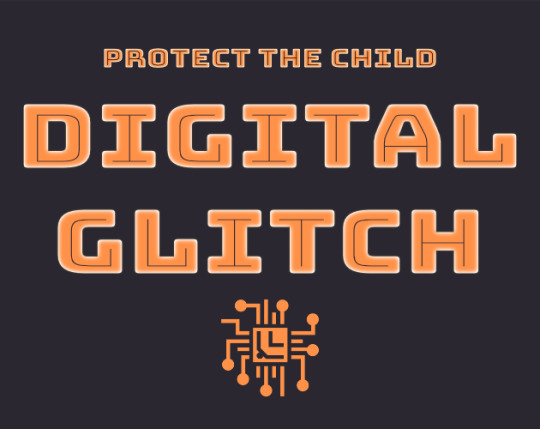
It was supposed to be a simple job. Get in, get a sample, get out, don't get caught. You didn't expect there to be a kid, locked up in a room like a mouse in a box. She says the corpos stole her away from her parents and stuck her full of needles. Now she's in your arms, hands over her ears while the alarm blares, and security drones are blocking your every exit. What do you do?
Digital Glitch is a new, cyberpunk setting for Protect the Child. It includes 7 pre-written characters, all members of a group of cyber-runners, criminals who go on high-stakes jobs to rob the mega-corporations called zaibatsus in order to keep themselves alive. Unfortunately, the lab they were attempting to rob also happened to hold a girl, whose genetic code has gave her super-senses and a hyper-sensitive nervous system after IrisLabs tried a new experimental procedure.


You need the rules for Protect the Child in order to be able to play this game, but right now, since PtC is in playtesting, the rules are free!! Currently downloading the game gives you access to a Google Sheets play-kit. There is also a pdf in the works to be released at a later date.

This play-set was designed for both the Kiwi Jam 2024, and the Dice Exploder Pregen Jam. It's list of inspirations include Hamixh Cameron's The Sprawl, Cory Doctorow's Unauthorized Bread, and ZebraMatt's 24XX Dire Pulse. It contains themes of Infertility, Exploitation, Police Violence, Capitalism, Disability, and Medical Horror.
Check it out today!
144 notes
·
View notes
Text
The Best News of Last Week - September 11, 2023
Sorry for not sending last week's issue as I got covid again :/ I passed it, so here's the best things that happened last week :)
1. The IRS plans to crack down on 1,600 millionaires to collect millions of dollars in back taxes

The IRS announced on Friday it is launching an effort to aggressively pursue 1,600 millionaires and 75 large business partnerships that owe hundreds of millions of dollars in past due taxes. The newly announced tax collection effort will begin as soon as October. “We have more hiring to do,” Werfel said. “It’s going to be a very busy fall for us.��
2. The NGO African Parks announced it would purchase the world’s largest population of privately owned white rhinos

Africa’s beleaguered rhinos have been thrown a significant lifeline with the announcement that nearly 2,000 semi-wild rhinos owned by South African rhino breeder John Hume will be “rewilded” into reserves across South Africa and other parts of the continent over the next 10 years.
3. Mexico supreme court decriminalizes abortion across country

Mexico’s supreme court has unanimously ruled that state laws prohibiting abortion are unconstitutional and violate women’s rights, in the latest in a series of victories for reproductive rights activists across Latin America.
Wednesday’s ruling came two years after the court ordered the northern state of Coahuila to remove sanctions for abortion from its criminal code, a decision which prompted a tortuous state-by-state process of legal battles. So far 12 of Mexico’s 31 states have decriminalized the procedure.
4. The first human organ created inside an animal opens the door to manufacturing ‘spare parts’ for people

It is a historic image. A team of researchers in China has successfully generated a blueprint of a human organ in another animal for the first time. The experiment, conducted with humanized kidneys in pig embryos, represents a step toward the still-distant dream of using other mammals as source of organs for transplants.
5. Study Shows a Single Dose of Psilocybin's Astonishing Impact on Depression and Could Change Medical Treatments of Mental Health Forever

Psychedelics are making a comeback, and this time, they're dressed in the respectable garb of clinical research. Recent studies have reignited interest in these substances, particularly psilocybin, the active compound in magic mushrooms, as a potent treatment for major depressive disorder (MDD).
6. Missing cat reunited with owner after it disappeared during Alaska flooding

Twenty-six days after he went missing, an adorable black and white cat named Leo has been reunited with his family. Brave Leo went missing after historic glacial flooding swept away his home and all his owner's belongings.
7. Dogs perform Mozart with orchestra in Denmark
youtube
A classical music festival in Copenhagen, Denmark, has opened with some canine additions to the orchestra.
---
That's it for this week :)
This newsletter will always be free. If you liked this post you can support me with a small kofi donation here:
Buy me a coffee ❤️
Also don’t forget to reblog this post with your friends.
690 notes
·
View notes
Note
What are the laws? About ancient laws? I think there were old laws in the Chinese Empire that called for family extermination. your family was erased, but I don't know how much about it. I wanted to write the MC and sibling survived this law. and without them realizing it?
Writing Notes: The T'ang Code
Tang dynasty - (618–907 CE) or T'ang; Chinese dynasty that developed a successful form of government and administration on the preceeding Sui model, and stimulated a cultural and artistic flowering that amounted to a golden age.
Marked by strong and benevolent rule, successful diplomatic relationships, economic expansion, and a cultural efflorescence of cosmopolitan style, Tang China emerged as one of the greatest empires in the medieval world.
Merchants, clerics, and envoys from India, Persia, Arabia, Syria, Korea, and Japan thronged the streets of Chang’an, the capital, and foreign tongues were a common part of daily life.
This dynasty—like most—rose in duplicity and murder, and it subsided into a kind of anarchy. But at its apex, in the early 8th century, the splendour of its arts and its cultural milieu made it a model for the world.
The Tang dynasty also flourished because special attention was paid to molding an orderly society through the promulgation of sophisticated law codes. From ancient times, in China, law was viewed as an expression of the will of the emperor, whose pronouncements defined illegal conduct and proper punishments for it.
The T'ang Code
The T'ang Code contains 12 sections, and is divided into 2 parts:
an initial section expounding the general principles of criminal law, and
a second section setting forth the specific offenses covered, together with the punishment for each such act.
In the first years of the dynasty a series of criminal codes and administrative statutes were promulgated in order to govern the empire effectively.
Though only the Code has survived in entirety, we know from historical sources, as well as from still extant fragments, that there was a large body of written law in effect during the T'ang period.
There were 4 main divisions: the Code, the Statutes, the Regulations, and the Ordinances.
The Code reflects the position of the emperor as the most important link between the human and the natural worlds as well as the head of the government.
Offenses that involve the emperor or the imperial house are on a different level from those against other persons.
In such cases not only the criminal but also his family members would be executed and their possessions confiscated by the state.
Such crimes head a list of ten categories of offenses that were regarded as particularly heinous.
Not only were the punishments especially severe for persons who committed such offenses, but certain other procedural protections, usually available to those convicted of other crimes, were not allowed to them.
The Ten Abominations. The most serious offenses a person could commit.
Plotting rebellion
Plotting great sedition
Plotting treason
Contumacy
Depravity
Great irreverance
Lack of filial piety
Discord
Unrighteousness
Incest
The crimes included within the ten abominations are those that endanger the emperor or the state, those that are committed by subordinate members of the family or bureaucracy against their superiors, those that threaten the existence of the family, and those that involve black magic.
The penalties for the first 3 "abominations" called for punishment not only of the individual incriminated in the plot, but also of that person’s entire family (parents, children, brothers, and sisters) who were liable for penalties up to and including execution.
Rebellion against the imperial house is compared to natural calamities.
The intent of the Code toward those who plot either rebellion or great sedition is clearly stated in Article 32:
Plotting rebellion and great sedition are criminal to the utmost degree of censure and extermination. They defile the whole family and property and the eradication of evil must reach to the roots.
Clearly, then, the purpose of the law in such cases was not merely to punish the criminal, but rather to exterminate his whole family.
In traditional China, with its great emphasis on the continuation of the family, there could be no greater punishment than to end a family's name.
Officials could also be punished for the offenses of their family members. For example, if within the area under an official's control one of his family members committed extortion or accepted bribes, the official would be punished, even though he knew nothing of the crime.
Older members of families also had increased responsibility because of their status and reciprocity.
If they committed a crime together with other members of the family, only the person highest in generation of age was punished.
The younger members of the family escaped completely.
The same was true for other groups such as those living in monasteries or for teachers and their disciples. Where members of the same family committed a crime by the decision of the head of the household, only he was punished even though he took no part in the crime.
An excerpt from "The Tripartite Compact of Emperor Kao" (Han dynasty):
My Venerable Seniors! I know too well how long you, my fellow-countrymen, have suffered untold hardships under the harassing laws of the preceding dynasty, by which the criticizing of ·government was punished with the extermination of one's whole family, and even talking on the streets was prohibited under pain of decapitation
Sources: 1 2 3 4 5 6 7 8 ⚜ More: References ⚜ Writing Resources PDFs
Hope this helps with your writing, sounds really interesting so far.
#tang dynasty#history#writing notes#writeblr#literature#writers on tumblr#writing reference#dark academia#spilled ink#writing prompt#creative writing#writing inspiration#writing ideas#light academia#writing resources
58 notes
·
View notes
Text
A Senate committee studying a bill to establish a criminal offence with respect to sterilization procedures heard emotional testimony from a survivor of coerced sterilization on Thursday.
"It's like you wiped out a generation," Nicole Rabbit, a member of Survivors Circle for Reproductive Justice, an organization for Indigenous women who are survivors of coerced and forced sterilization, told the committee in Ottawa.
Bill S-250 an Act to Amend the Criminal Code (sterilization procedures) would make forced and coerced sterilization punishable under the Criminal Code by up to 14 years in prison.
Full article
Tagging: @politicsofcanada
#cdnpoli#canada#canadian politics#canadian news#canadian#bill s-250#forced sterilization#coerced sterilization#sterilization#Indigenous#genocide#reproductive rights#reproductive health#reproductive justice#bodily autonomy#senate
211 notes
·
View notes
Text
Eli got his ballot the other day.
I'm still trying to understand it.
I.
The ballot card itself consists of four pages, each 8.5 by 19 inches, each double-sided. It carries the mark of the Secretary of State, tint and watermark. Cal. Elec. Code § 13002.
The United States guarantees to every one of its States a republican form of government. That means that here the people rule, more or less directly. California leans to the "more" side.
There are fourteen offices on the ballot, for the United States, the State of California, the City and County of San Francisco, for the school and college board, and the transit district.
Then there are twenty-five ballot propositions, ten for the State, fourteen for the City and County, one for the school board, and none, I suppose, for the transit district.
The ballot card arrived with something that calls itself a Voter Information Pamphlet and Sample Ballot. The Pamphlet is actually a volume of 294 pages, printed and bound on stock that gives it the texture and dimensions of a slim phone book.
San Francisco is a small town that likes to think it's a big one.
It certainly gave itself a big book.
II.
Looking over the materials, I was troubled by how little I knew and understood about what Eli was asked to do.
To take on part of the government of the State, as the ballot asks you to, is a heavy thing. It takes intelligence and judgment to discriminate between the better and the worse.
It takes some amount of understanding. It takes more when you're asked not only about one candidate, but many, and not only about candidates, but about the laws themselves.
It takes knowledge of the offices and their powers. In a constitutional government, officers have the powers the laws give them, and assemblies the powers the constitution gives them.
And I don't know the constitution or the laws.
III.
The Constitution of the United States is a compact little instrument. It amounts to about 7,500 words across seven articles and twenty-seven amendments.
The compactness is by design. It is short because short instruments, and possibly only them, M‘Culloch v. Maryland, 17 U.S. (4 Wheat.) 316, 407 (1819), may be read and understood.
California's constitution is a beast of a different order.
California doesn't make it easy to read its constitution. But the State Legislature does periodically put out a volume with the federal and state constitutions, along with other instruments.
In its most recent edition, updated to November 8, 2022, the book is 467 pages. The federal constitution, with amendments, takes up 22 of those pages. The state constitution takes up 210.
I still haven't more than skimmed it.
IV.
I'm trying to read up on the constitution and the laws of California. The State doesn't make it easy.
California is sparing in its reproductions of its laws. California permits you to read individual articles whole, but not parts or titles, at least not titles with more than one chapter.
To read the whole of the California Penal Code, for example, as presented by the State, you would need to open something a little short of 680 separate addresses. The four parts and 34,400 sections of California's penal code demand nothing less.
In Canada, where criminal law and procedure are exclusively federal matters by virtue of Constitution Act, 1867, 30 Vict. c. 3, § 91(27), the Crown provides the entirety of the federal Criminal Code, RSC 1985 c C-46, at a single address or a single document.
In California, your 680 separate addresses are not law. They are not even evidence of the law. If you take your copy of the California Penal Code, as presented, before a state magistrate, they may decline to take it.
Because California does not guarantee that what it presents is the law. It does not authenticate those 680 separate addresses, at least. California does not authenticate codes, titles, or chapters it presents to you. It does authenticate, but only something much smaller. Sections.
California will authenticate an individual section of its written law for you. It will give you a PDF with a digital signature. A single, letter page. A single section and a vast, blank space. And a digital signature, courtesy of Adobe.
That's what California gives you. But to get the whole thing? To get the whole 34,400 sections of the California Penal Code, the 9,500 sections of the Civil Code, or the 61,000 sections of the Revenue and Taxation Code? Well.
You'll have to put those together yourself.
V.
That's what I'm doing. I'm trying to put them together myself.
67 notes
·
View notes
Text
The SUPERCOMMANDO CODEX - DRAFT
CONTENTS
Mandalorian Code Interpretation [link is found here]
Strength is Life
Honor is Life
Loyalty is Life
Death is Life
2. Honourable Conduct [link is found here]
Honour in self
Honour in the Community
Honour in the Galaxy
Honour Amongst Clan
Honour in Partnership
Honour in Leadership
Honour in Combat
3. Adoption Law [link is found here]
The Legal Definition of Foundling
Foundling Procedure
Disownment of Parent
Community Adoption
Adoption regarding criminal activities
Adoption regarding marital conditions
Adoption Consent
4. Marriage and Divorce [link is found here]
Spouse Definition
Spousal Privileges
Conditions for Legal Engagement
Consent and Age Restrictions
Conditions for Legal Marriage
Conditions for Legal Divorce
Children, Clan and House Considerations
5. Resolnare [link is found here]
The Six Tennent’s Broader accepted conditions
Way Followers Interpretation
Naasaade Interpretation and Redemption of Vows
Noncombatant Interpretations
The Mandalorian Healer’s Code
The Mandalorian Armourer's Code
Codes recognised in Conjunction
6. Clan and House [link is found here]
Definition of House
Responsibilities of House
Definition of Clan
Responsibilities of Clan
Requirements needed to be declared Alor of Clan
Requirements needed to be declared Alor of House
Requirements needed to be declared a Major House
7. Language Protectorate [link is found here]
Mando’a in Practice
Rights to change, add or remove words
Script usage and recognition in Mandalorian Space
8. The Position of Manda’lor [link is found here]
Requirements needed to be a candidate for Manda’lor
Responsibilities
Oversight
Commanding body
Restrictions, Compliance and Declarations of Misconduct
9. Education and Cultural development [link is found here]
The Education Responsibilities of Clans
The Education responsibilities of Schools and facilities
Freed Re-education programs and foundations
Religious and cultural rights within education systems
Parental rights throughout education
10. Electoral Process [link is found here]
The Court of Houses
The Sector Governors
The System Governors
The Astro Body Governors
District Electoral Members
Electoral Voters
Voting conditions
Overseers of the Ballot
Postal Elections
Voting Eligibility
Right and Responsibility
Conditions for Referendum, Re-election and Hung Parliamentary Votes
11. Court of Law
Family Court
Criminal Justice Court
Court of Appeal
Military Court
Financial and Business Court
Public Courts
12. Responsibility and due process
Parental Responsibility
Personal Responsibility
Political Responsibility
Financial Responsibility
Military Responsibility
Adoption Due Process
Engagement and Marriage Due Process
Divorce and Separation Due Process
Election Eligibility Due Process
Firearms Licensing Due Process
Verdgoten and Adult Graduation Due Process
Election Results Due Process
Parental Disownment Due Process
Clan and House Formation Due Process
13. Foreign interaction and policy
Foreign Ambassador acceptance
Externa; Ambassadors abroad
Foreign Currency and Exchange
Border Security
Digital Security and Programming Policy
Citizenship and Visa Acceptance
14. Employment within and outside of the sector
Legal age and parameters of employment
Contract and procedure for levels of employment
Foreign policy for Mando'ade working abroad
Foreign policy for outsiders working in Mandalore
15. Property and payment
Land ownership and tenancy
Forms of payment accepted in legal contract
Ownership and registration of vehicles
Ownership and registration of Firearms
Ownership and registration of Non-sentient Animals
Copyright, fair trade and artistic license
16. Beskar
Donations to Foundlings
Ownership
Sacred right to wear beskar as armour
Conditions for percentage declared
Rights to mine and export
Religious significance
17. Recognised Mandalorian Sects and Coverts
Traditionalists
Haat Mando’ade
Naasaade
Way Followers
Creed Bound
Silver Children
18. Armour and Weapon Classifications
Military Issue
Military Grade
Civilian Use
Hunter and Mercenary Equipment
Trade and Specialist Equipment
Journeyman, Protectorate
19. Criminal sentencing
Theft
Grievous bodily harm
Assault
Rape
Murder
Manslaughter
Negligence
Criminal Negligence
Medical Malpractice
War Crimes
Demagolkase - War Crimes against children
Sentient Trafficking and experimentation
Financial Misconduct and Tax Evasion
20. Military and Law Enforcement
Military
Mandalorian Protectors
Journeyman Protectors
Home Guard
Manda'yaim Reserve
21. Land Rights and Conservation
Land Ownership
Sale and Redistribution of land
Declaration of Sacred Places
Sector Council Lands, Protectorate Lands, Crown Lands and Stock Routes
Protected Areas
Water Ways
Tenancy, Lodging, and Temporary Accommodations
Public Areas
Squatters' Rights
Sanctioned and unsanctioned terraforming
22. Commerce, Business and Integrity
Currency and Zones
Business Licenses and Legal Procedure
External business practice
Monopoly businesses and Mega Businesses
Banking within the Sector
23. Discrimination [link is found here]
Species
Sex
Religious Interpretation
Language
Ability
24. Closing Statements
Manda'lor Jaster Mereel [link is found here]
The Translator
25. References
Regarding headcanons for Houses; [link is found here]
26. Contacts and Relevant Supervising Personnel of Note
[This post will be altered as I go, and as amendments are made]
#star wars#supercommando codex#true mandalorians#mandalorian codex#mandalorian culture#fandom#jaster mereel#ghost wrote this over my shoulder and screamed at my referencing#Jaster's 70k long legal document that changed the galaxy#autism my beloved#mandalorian language#mandalorian code#mandalorians#mandalore#haat mando’ade#haat'mando'ade#mandalorian canons of honour
487 notes
·
View notes
Text
Academy Maniacs Article Translated

NOTE: I may have missed a part but this is the whole article.
———
ISSUES: KONKURENTl calendar dated January 28, 2013
"Good-natured boy."
The defendant in the case of "hammer throwers" asked for freedom
Author: ANGELINA SALOMATOVA
The Irkutsk Regional Court received the criminal case against Artyom Anufriev and Nikita Lytkin, who, according to the investigators' version, were operating in Irkutsk Akademgorodok from the fall of 2010 to the spring of 2011, killing six people and attempting to kill eight others, on August 13 last year. According to the Code of Criminal Procedure, the term of detention of the defendants, who have been in Irkutsk SIZO-1 since their arrest on April 5 last year, expires six months after the case is filed with the court, on February 13.
However, according to the court, by that time the case cannot be considered on its merits: it took the prosecution six months just to announce the evidence collected in 49 volumes. At the hearing on Wednesday, January 23, the lawyers started presenting evidence, having summoned the first witnesses and experts to the court. Also ahead is the debate of the parties and the final decision. In this regard, the judge put the issue of extending the period of detention on the table. The defendants, who have already been behind bars for almost two years, as it turned out, are not averse to being free. After a short break in the session, which took Artyom Anufriev to communicate with his lawyers, he asked the court to change the measure of restraint to a custodial release.
"All the fears of the investigation about my being on the outside are groundless. I will not be able to influence the course of the investigation in any way, I will not be able to put pressure on witnesses, I will not be able to destroy evidence either. I have places of study, work, residence, at least I had them. I ask to appoint a measure of restraint not involving imprisonment," said Anufriev. The lawyer supported the position of the defendant: "He is socially adapted, as he has a mother, with whom he lived and can continue to live, he does not intend to hide. In addition, he really can not influence the course of the investigation, as all the evidence is already in court, the judicial investigation is coming to an end".
The mother of Nikita Lytkin did not insist on changing the measure of restraint, leaving the decision "at the discretion of the court", but said that her son had long and deeply repented of the crimes committed and, in her opinion, "is not dangerous to society". Despite the defense's arguments, the court decided to extend the detention for three months, until May 13.
"The defendants are accused of particularly serious crimes against the person, committed over a long period of time. Each of the incriminated acts is punishable by imprisonment for a long period of time, including up to life imprisonment. In selecting a measure of restraint, the court took into account that, being at liberty, they could continue criminal activity and escape from the investigation. These circumstances have not fallen away and have not changed," the judge read out the ruling.
A new stage of the judicial investigation, during which evidence will be presented by the defense side, began at the hearing on Wednesday. Among the first lawyers invited an expert on information systems to the court, with the help of whom they found out the subtleties of data exchange in social networks, in particular "VKontakte", in which, according to the investigation, the defendant Anufriev kept extremist correspondence with acquaintances. According to the expert, the correspondence history stored on the server of the social network could theoretically be changed, which Artem Anufriev himself did not know anything about, and therefore, the information seized from the storage can not be evidence in the case.
—
Artyom Anufriev also denies that he was involved in a vicious correspondence, claiming that he gave the password to his social network page to one of his acquaintances, who left compromising messages on his behalf. The court has yet to sort out the evidence; the unique network IP address from which the defendant accessed the Internet may be used to identify the user of the social network. In addition, Anufriev, who chose the policy of denial of guilt, in his defense stated that in the protocol of on-site testimony, held on April 11, 2011, there is a signature made on his behalf by another person. At the request of the state prosecutor, a handwriting examination was appointed, which was entrusted to the Irkutsk Laboratory of Forensic Expertise.
Recall that at the first stages of the investigation, Artyom Anufriev and Nikita Lytkin fully admitted guilt in committing a series of crimes. However, during the judicial investigation, the first refused to testify and said that he had incriminated himself under torture and threats of investigators "with trouble in the detention center". Since then, the defense lines of Anufriev and Lytkin have been divided. The side of the senior defendant, Anufriev, who is charged with, among other things, involving the minor Lytkin in particularly serious crimes, insists that the defendant could not have been the organizer and ideological inspirer of the extremist community, as the prosecution believes.
In order to prove this, the lawyers called to court a woman who knows Artyom Anufriev "from diapers". The witness, who spoke first on the defense side, said that Artyom Anufriev's mother was a close friend of her own mother and the long family friendship allows her to characterize the defendant. "Artyom is a good-natured boy, polite, I have never heard a bad word from him," the witness said. - He is enthusiastic and capable. In character, soft, kind, driven. They had a boy who was always organizing something - basketball, tennis. Unless you called Artyom and invited him, he wouldn't go. They had a music group; when the organizer left town, the group broke up. Artyom's mother offered to create a new group, but he couldn't because he doesn't have organizational skills.
The witness testimony, according to the defense, should refute the prosecution's thesis that Artyom was the brains and inspiration, while Nikita was the executor. The woman also said that Anufriev's mother did not approve of his friendship with Lytykin. "She believed that this young man does not do anything, badly influences Artyom, interferes with his studies. Always tried to stop their friendship," the witness stated. The court has yet to assess the arguments of the defense. The hearing will continue next week. After reviewing the evidence of both sides, the court will consider possible motions to supplement the judicial investigation, after which the debate of the parties will begin and the judge will make a final decision.
#tc community#tccblr#tcc columbine#true cringe community#tcc tumblr#eric columbine#eric and dylan#dylan columbine#info post#academy maniacs#artyom anoufriev#nikita lytkin
78 notes
·
View notes